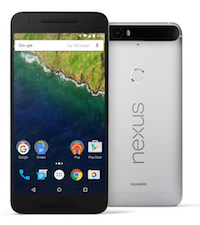 Not so many years ago, the introduction of a major new Android release was more like looking six months or more into the future when your phone just might become eligible for upgrade. In the case of the Android 6.0 (“Marshmallow”) update announced yesterday, however, owners of recent Nexus devices can start downloading next week, and those who buy the newly announced Nexus devices — the LG-made, 5.2-inch, Nexus 5X, and Huawei’s 5.7-inch Nexus 6P — will feast on Marshmallow when the devices ship in October. The same goes for Google’s newly tipped Pixel-C tablet, due in December (see below). Based on Android 5.0 “Lollipop”, most other major Android devices that run Lollipop should be onboard before the end of the year or early 2016.
Not so many years ago, the introduction of a major new Android release was more like looking six months or more into the future when your phone just might become eligible for upgrade. In the case of the Android 6.0 (“Marshmallow”) update announced yesterday, however, owners of recent Nexus devices can start downloading next week, and those who buy the newly announced Nexus devices — the LG-made, 5.2-inch, Nexus 5X, and Huawei’s 5.7-inch Nexus 6P — will feast on Marshmallow when the devices ship in October. The same goes for Google’s newly tipped Pixel-C tablet, due in December (see below). Based on Android 5.0 “Lollipop”, most other major Android devices that run Lollipop should be onboard before the end of the year or early 2016.
The Android 6.0 announcement was also a reflection of the past, or at least of the last few months of leaked information. Google seems less concerned these days about keeping its Android plans secret. It’s a long way from the level of transparency — let alone public input — of the desktop Linux world or projects like Tizen and Firefox OS where upcoming releases are pawed over in alphas and betas for many months. Yet, along with the faster release rollouts and substantial Android M Developer Previews, it’s a step in the right direction.
In addition to unveiling Marshmallow, Google announced an updated Chromecast 2.0 media streaming device with a new disk-like design and a 5GHz WiFi-ac radio. There’s also a new Chromecast Audio gizmo you can plug into any speaker’s 3.5mm audio jack to turn it into a mobile streamer. In short, for only $35, you get the key feature of a much more expensive smart speaker such as the Linux-based Sonos, which also had a major announcement this week with its impressive Sonos Play:5.
Marshmallow Pushes Power Management, Google Now
The first major Android release since last year’s Android 5.0 is not quite as transformative. However, it’s especially welcome to those who use Google Now voice activation or are continually searching for a power plug.
With Android 6.0, the Google Now assisted voice interface and digital concierge extends throughout the Android experience into apps. Google Now response time is improved, and a new “Now on Tap” contextual suggestion feature enables the personal assistant to improve its contextual snapshot of your situation by examining all currently open apps and content.
In other words, Google’s digital genie is getting smarter. Those who were wary of Google Now (or Siri and Cortana, for that matter), are likely to be even more creeped out. Yet, those who have been holding off letting Google take over even more of their lives until Google Now was more dependable, may want to give it a try.
In a nod toward privacy concerns, Android 6.0 breaks down the permissions for a given app’s access into various device features and data into more specific requests. For example, you can approve or deny access to specific functions at different times, and you can deny all permissions on the fly. A similar approach is found on the upcoming, ultra-secure Blackphone 2.
Whether or not you use Google Now or are vigilant enough to spend a lot of time fine-tuning your permissions, all Android 6.0 users can enjoy more foundational improvements. Android 6.0 offers improved notifications, faster scrolling, new window animations, and better developer support for Voice Actions, says Google.
A new “Doze” power management feature places your device into a deeper sleep mode than was possible before, thereby extending battery life during downtime. In addition, less power is used to keep “seldom used apps” at the ready, and devices that incorporate a new Android Sensor Hub chip can better track motion, thereby improving power management.
Android 6.0 adds support for the new USB Type-C port, which lets you plug in a cable facing up or down and charge your device much more quickly. It also has support for fingerprint-based security to reduce the necessity for passwords. The feature can be used for Android Pay, the Play Store, and supporting apps. As with the Android Sensor Hub, both features are found on the new Nexus devices.
Nexus 5X and 6P
Now that intrusive UI skins and bloatware are no longer as prevalent, the original goal of the Nexus program — to offer a pure, stock Android experience — has changed somewhat. Samsung, HTC, and others have toned down the intrusiveness of their add-ons, and fairly stock Android builds are increasingly common. Yet mindful of the revived competition from Apple’s iPhone, Google wants Android vendors to follow its lead in hardware and keep its apps and services in the forefront.
 With the latest two Nexus devices, Google appears to be putting the brakes on phablet expansion. Considering that last year’s 6-inch, Motorola-built Nexus 6 was one of the less popular Nexi, Google had first-time Nexus partner Huawei reduce the size of the new 6P to 5.7 inches. It’s still a phablet, but it’s thinner (7.3mm), lighter (10 grams), and easier to hold, according to a hands-on report from The Verge.
With the latest two Nexus devices, Google appears to be putting the brakes on phablet expansion. Considering that last year’s 6-inch, Motorola-built Nexus 6 was one of the less popular Nexi, Google had first-time Nexus partner Huawei reduce the size of the new 6P to 5.7 inches. It’s still a phablet, but it’s thinner (7.3mm), lighter (10 grams), and easier to hold, according to a hands-on report from The Verge.
The lower-end, $380 Nexus 5X, which updates the similarly LG-built, and quite successful Nexus 5, increases the screen size, but only from the previous 5.0 to 5.2 inches. Gizmodo joined the general media lovefest regarding the new Google devices, praising the 5X for its light weight, easy grip, and impressive speed.
The 5.2-inch Nexus 5X offers HD resolution, while the 5.7-inch Nexus 6P features 2560×1440 pixels. The former runs on Qualcomm’s 1.8GHz hexacore Snapdragon 808 with two Cortex-A57 and four Cortex-A53 cores, while the Nexus 6P advances to an octacore Snapdragon 810, split equally between -A57 and –A53 cores. Both devices feature high-end, 12.3-megapixel, f/20 rear-facing cameras with 1.55µm pixel size. There are also front-facing cameras: 5-megapixel on the 5X, and 8-megapixel on the 6P.
The 6P ships with 3GB RAM and 128GB storage, while the 5X has 2GB and tops out at 32GB storage. Both devices offer a Nexus Imprint fingerprint reader, USB Type-C ports, and the Android Sensor Hub chip.
Google also unveiled a Google-branded tablet, which despite its Android 6.0 firmware, goes under the Chrome OS Pixel brand instead of Nexus. Like the touchscreen-enabled Chromebook Pixel laptop, the Pixel C 2-in-1 tablet is a high-end competitor for Windows-based devices such as Microsoft Surface.
The 10.2-inch, 2560 x 1800-pixel tablet runs on the latest Nvidia Tegra X1 processor. The optional, magnet-attached keyboard only slightly increases the 7.0mm profile. The Pixel C will sell for $499 plus $149 for the keyboard, with availability slated for December.
Despite the improvements in Android 6.0, and the Android at Work program, Android has a way to go before it’s taken as seriously as Chrome OS as a laptop or 2-in-1 for the enterprise. Security is one continuing issue. The bigger problem is the relative lack of Android apps that are optimized for 10-inch tablets.

